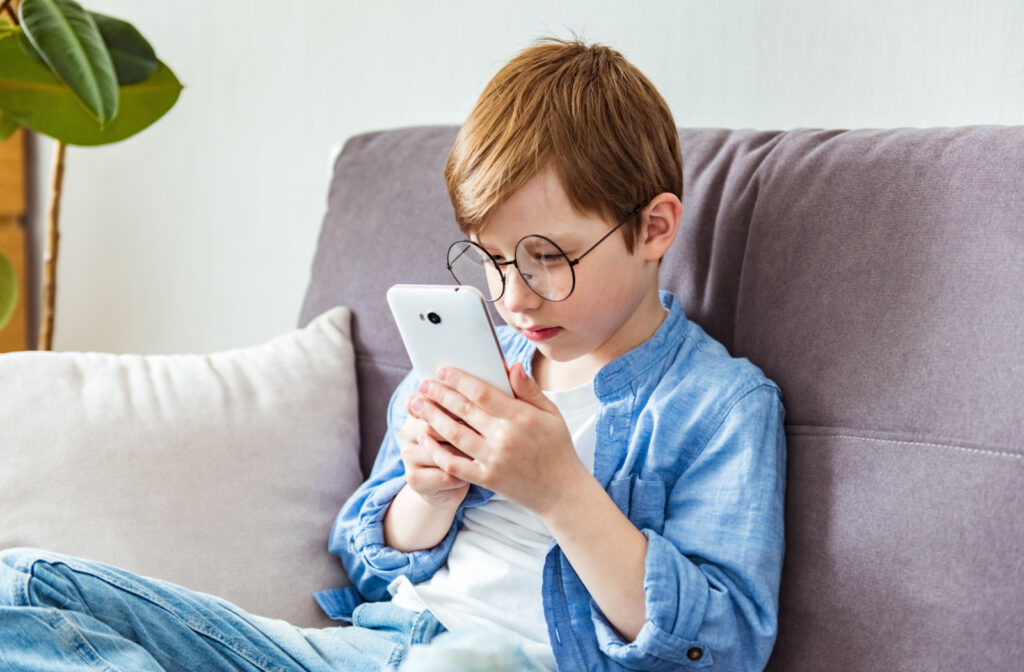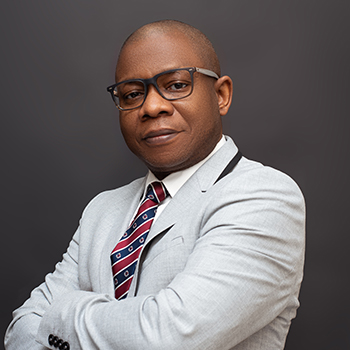Many patients live with myopia, a common eye condition. It typically develops in early childhood and can progress for years if left untreated. Early intervention is important for helping correct and control myopia.
While no cure for myopia exists, and you cannot reverse its effects, your optometrist can help protect your child’s vision. They can recommend a customized treatment plan to help correct your child’s vision and slow future myopic progression.
Book regular eye exams for your child to help identify this condition as early as possible.
What Is Myopia?
Myopia is a refractive error many Canadians live with—in fact, over 30% of Canadians have this condition. Myopia affects how well you see from far away distances. Distant images appear blurry, while close-up objects typically appear clearly. Incoming light into the eye does not bend correctly, leading to blurry vision.
Some common symptoms of myopia include:
- Blurry vision
- Eye strain
- Headaches
- The need to squint to see clearly
Myopia typically develops in childhood, but it can be difficult for children to know they have an eye problem. It is easy for them to assume that everyone sees like they do. If your child has myopia, they may need to sit closer to the front of the classroom or squint frequently to see.
Booking annual eye exams for your child can help your eye doctor diagnose this condition as early as possible. They can help protect your child’s eye health and vision.
What Causes Myopia?
While no definite cause of myopia exists, patients with this condition have uniquely shaped eyes.
The eye is too long, or the cornea has a steep curve, affecting how light bends as it enters the eye. Incoming light lands in front of the retina instead of directly on it, leading to blurry vision.
While eye shape affects sight, the other factors influencing myopia development include:
Myopia Progression Explained
Myopia is commonly diagnosed in childhood when the eyes undergo many natural changes. Children’s eyes grow as they do, which means that myopia can worsen with time, known as myopia progression. If myopia becomes severe, it is called high myopia.
High myopia refers to patients who have significantly impacted vision and require stronger prescriptions to see clearly. Your child will likely have to rely on heavy prescriptions in adulthood if myopia progresses into high myopia.
Besides poor vision, high myopia increases the risk of several eye conditions, including:
Can Myopia Be Reversed?
Unfortunately, there is no cure for myopia, and treatment cannot help restore vision when it worsens. There is a chance that vision corrections occur as your child’s eyes grow, but there is no guarantee.
While myopia cannot be reversed, your optometrist can help protect your child’s vision from worsening with myopia control treatments.
Treating Myopia
Myopia is a treatable condition, and your optometrist has many options available to help correct your child’s vision and slow myopic progression.
It is important to note that treating myopia involves both correcting vision and controlling myopia progression. Single-vision lenses may help your child see better but will not slow myopia progression.
Your eye doctor can recommend a customized treatment plan for your child’s vision needs, including myopia control treatments like atropine eye drops, orthokeratology lenses, or multifocal contacts.
Atropine Eye Drops
Atropine eye drops can help slow myopia progression. These eye drops work by temporarily relaxing the muscles in the eye, preventing the eye from elongating and worsening myopia over time.
While atropine eye drops can help slow myopic progression, your child will still need glasses or contact lenses to see clearly.
Orthokeratology (Ortho-K) Lenses
Ortho-k lenses are specialty contact lenses that your child wears while they sleep. These lenses gently reshape the cornea overnight, providing clear vision during the day without needing corrective lenses.
Your child must continue wearing these lenses every night to help correct and control myopia.
Multifocal Contact Lenses
Multifocal contact lenses feature different lens powers throughout the lens. They can look similar to a bullseye, with the centre of the lens providing clear vision and alternating rings surrounding it that correct and control myopia.
The idea behind these lenses is to “defocus” your child’s peripheral (side) vision to help slow eye growth.

Protect Your Child’s Vision
Myopia can significantly affect your child’s vision, but you can help protect their eye health. Make sure you book regular eye exams for them as they grow to help diagnose myopia and other eye conditions as early as possible. The sooner your optometrist identifies a problem, the sooner they can help treat it. Contact Alcona Eye Care Centre if your child experiences symptoms of myopia. Your optometrist is here to help with your family’s vision needs.





